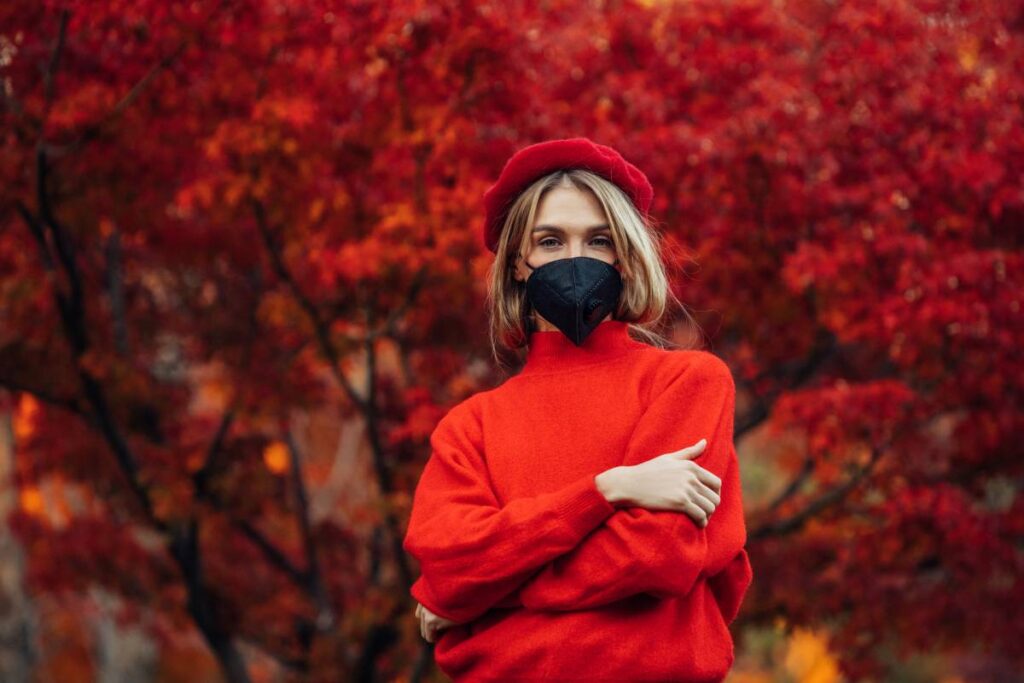As the fall season approaches, healthcare systems and the public face both recurring and emerging health concerns. Each fall brings shifts in respiratory illness patterns, behavioral health needs, and chronic disease management challenges. Staying ahead of these trends helps clinicians, policymakers, and communities prepare effectively.
Fall marks the start of influenza and respiratory syncytial virus (RSV) circulation, often peaking later in winter. The overlap of influenza, RSV, and SARS-CoV-2, sometimes called the “tripledemic,” places significant strain on hospitals, particularly among older adults, infants, and people with chronic illnesses. Updated COVID-19 and flu vaccines are available each fall, and the first RSV vaccines for older adults and maternal use to protect newborns were introduced in 2023. Public health messaging continues to emphasize vaccination, masking in high-risk settings, and rapid testing when symptoms develop, which is increasingly important in fall and winter 1–3.
Shorter daylight hours and cooler temperatures contribute to seasonal affective disorder (SAD) and worsening depression or anxiety in vulnerable populations. College students, teachers, and families face heightened stress as academic calendars intensify, while holiday-related pressures often emerge in late fall. Public health agencies stress the importance of accessible counseling, suicide prevention hotlines, and community programs that foster resilience and reduce stigma 4–6.
Physical activity often declines in the fall as outdoor recreation slows down, while holiday foods can contribute to poor glycemic control, a phenomenon that interacts with the ongoing public health crises in the US around nutrition and obesity. Patients with diabetes, hypertension, and heart disease may require closer follow-up during this period. For those with asthma or COPD, falling leaves and cooler air increase symptom flares, compounded by viral exposures. Public health campaigns stress vaccination, medication adherence, and preventive screenings to keep chronic conditions stable 7–9.
The fall season is a time when universities, schools, and workplaces typically reconvene at full capacity, heightening risk for outbreaks of meningococcal disease, norovirus, and other communicable illnesses. Travel around the fall holidays can also accelerate the spread of outbreaks across states and countries. Public health departments often increase wastewater monitoring and genomic surveillance in the fall to detect emerging variants or novel pathogens earlier 10–12.
Children returning to school face heightened exposure to respiratory and gastrointestinal infections. Vaccination uptake, however, has lagged in many communities due to pandemic disruptions and misinformation. Pediatric influenza vaccination campaigns intensify each fall, and newer strategies, like maternal RSV vaccination, now help protect infants during the highest-risk months. School nurses and pediatricians are central to educating families on the prevention and early recognition of illness 13–16.
Fall can also bring extreme weather events, which may exacerbate respiratory and cardiovascular challenges. Emergency preparedness campaigns focus on ensuring medication supplies, reliable power for medical devices, and safe evacuation options for vulnerable groups 17,18.
Public health trends and concerns in the fall are shaped by predictable seasonal factors as well as evolving threats, from climate extremes to new pathogens. Awareness, vaccination, surveillance, and preventive care form the backbone of effective response. Ultimately, by anticipating these seasonal trends, healthcare providers and communities can reduce morbidity, protect vulnerable populations, and enter winter in a more secure position.
References
1. ‘Tripledemic:’ What Happens When Flu, RSV, and COVID-19 Cases Collide? > News > Yale Medicine. https://www.yalemedicine.org/news/tripledemic-flu-rsv-and-covid-19.
2. Quintero-Salgado, E. et al. Seasonal Shifts in Influenza, Respiratory Syncytial Virus, and Other Respiratory Viruses After the COVID-19 Pandemic: An Eight-Year Retrospective Study in Jalisco, Mexico. Viruses 16, 1892 (2024). DOI: 10.3390/v16121892
3. RSV (Respiratory Syncytial Virus) Immunizations | CDC. https://www.cdc.gov/vaccines/vpd/rsv/index.html (2025).
4. Modzelewski, S., Naumowicz, M., Suprunowicz, M., Oracz, A. J. & Waszkiewicz, N. The Impact of Seasonality on Mental Health Disorders: A Narrative Review and Extension of the Immunoseasonal Theory. Journal of Clinical Medicine 14, 1119 (2025). DOI: 10.3390/jcm14041119
5. Suicide Prevention – National Institute of Mental Health (NIMH). https://www.nimh.nih.gov/health/topics/suicide-prevention.
6. Seasonal Affective Disorder – National Institute of Mental Health (NIMH). https://www.nimh.nih.gov/health/publications/seasonal-affective-disorder.
7. Fares, A. Winter Cardiovascular Diseases Phenomenon. N Am J Med Sci 5, 266–279 (2013). DOI: 10.4103/1947-2714.110430
8. Donaldson, G. C. & Wedzicha, J. A. The causes and consequences of seasonal variation in COPD exacerbations. Int J Chron Obstruct Pulmon Dis 9, 1101–1110 (2014). DOI: 10.2147/COPD.S54475
9. CDC. Getting Your Immunizations for the 2024-2025 Fall and Winter Virus Season. National Center for Immunization and Respiratory Diseases https://www.cdc.gov/ncird/whats-new/getting-your-immunizations-for-the-2024-2025-fall-and-winter-virus-season.html (2025).
10. Wardi, M. et al. Wastewater genomic surveillance to track infectious disease-causing pathogens in low-income countries: Advantages, limitations, and perspectives. Environment International 192, 109029 (2024). DOI: 10.1016/j.envint.2024.109029
11. Norovirus and Managing Outbreaks | Vermont Department of Health. https://www.healthvermont.gov/disease-control/foodborne-diarrheal-illnesses/norovirus-and-managing-outbreaks.
12. Policy, B. on H. S., Medicine, I. of & National Academies of Sciences, E. Strengthening Outbreak Management and Emergency Response Systems. in Global Health Risk Framework: Resilient and Sustainable Health Systems to Respond to Global Infectious Disease Outbreaks: Workshop Summary (National Academies Press (US), 2016).
13. Enserink, R. et al. Gastrointestinal and Respiratory Illness in Children That Do and Do Not Attend Child Day Care Centers: A Cost-of-Illness Study. PLoS One 9, e104940 (2014). DOI: 10.1371/journal.pone.0104940
14. CDC. RSV Vaccine Guidance for Pregnant Women. Respiratory Syncytial Virus Infection (RSV) https://www.cdc.gov/rsv/hcp/vaccine-clinical-guidance/pregnant-people.html (2025).
15. Dickson, E., Cogan, R. & Gonzalez-Guarda, R. M. Role of School Nurses in the Health and Education of Children. JAMA Health Forum 6, e250116 (2025). DOI: 10.1001/jamahealthforum.2025.0116
16. Boudreau, A., Hamling, A., Pont, E., Pendergrass, T. W. & Richerson, J. Pediatric Primary Health Care: The Central Role of Pediatricians in Maintaining Children’s Health in Evolving Health Care Models. Pediatrics 149, e2021055553 (2022). DOI: 10.1542/peds.2021-055553
17. Climate-related emergency preparedness and management. https://www.who.int/teams/environment-climate-change-and-health/climate-change-and-health/country-support/building-climate-resilient-health-systems/emergency-preparedness-and-management.
18. CDC. Emergency Preparedness and Response. Emergency Preparedness and Response https://www.cdc.gov/emergency/index.html (2025).
